Customer Data Collection and The 4 D's of Personalization
By Robert Heger
12/28/2023

Not even the most successful digital commerce companies are immune to the oncoming paradigm shift from the comfort of ongoing acquisition to a customer loyalty focus. Ecommerce personalization at scale is the only answer, where practicing the four D’s: customer data collection, decision-making, designing engagements, and the delivery of experiences distinguish the leaders from the laggers.
- We’re experiencing a paradigm shift where customer acquisition is no longer a sustainable business practice.
- Databases have siloed as they’ve historically grown up, but with customer data platforms (CDPs) data is structured around the customer instead of department, channel or device, creating a single customer view (SCV).
- Organize customer data collection with the use of the four D’s to collect data, make decisions, design communication, and deliver exceptional experiences..
The Importance of Customer Data Collection
While the unanimous, underlying objective for companies continues to be increased revenue, what’s driving the ability to achieve this goal? Most companies are starting to realize the importance of proper data management and analytics in their business practices:
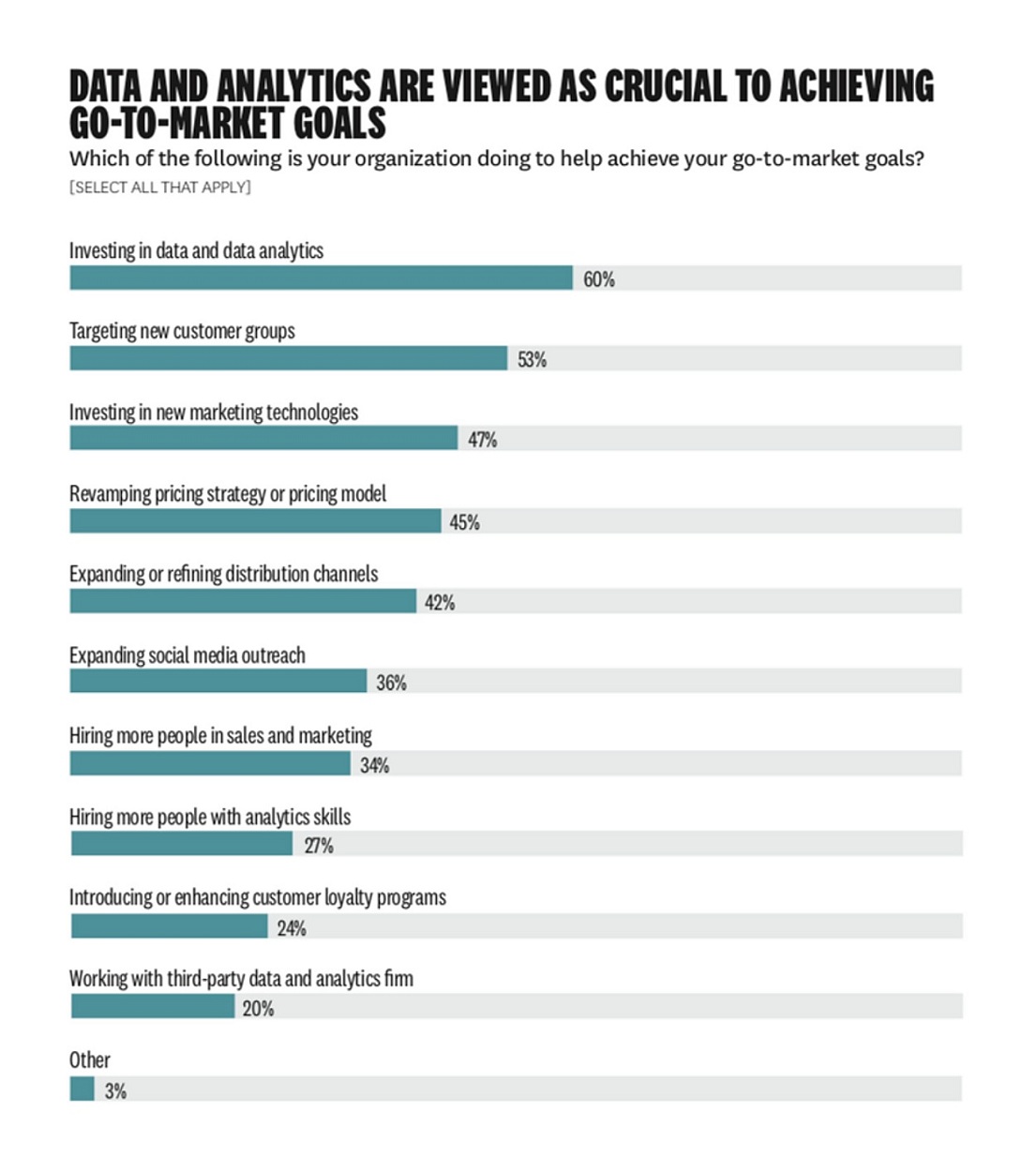 *Source: Harvard Business Review
*Source: Harvard Business Review
While we know where future interest and investment lies, let’s consider the alternative. Let’s explore the problems that arise when not employing customer data. Where without complete knowledge of the customer’s purchasing journey you may run into situations where you’re pissing off customers – which is the opposite of customer loyalty.
Situation: A customer purchases a product and on the very next day they receive a discount code for that same product.
Solution: On behalf of the brand, this may not have been intentional. Instead of sending one email en masse, it’s best to consider segmenting your mailing list to include purchase history in order to prevent a disastrous experience for your customers.
Let’s consider another one:
Situation: Customers receive too many emails, they begin to engage with them less often eventually leading them to unsubscribe.
Solution: By introducing frequency capping, customer can be grouped based on their previous email engagement. Thus more active customers can receive more emails than less active customers. As is standard practice, this can be A/B tested to continuously recalculate the optimal segmentation.
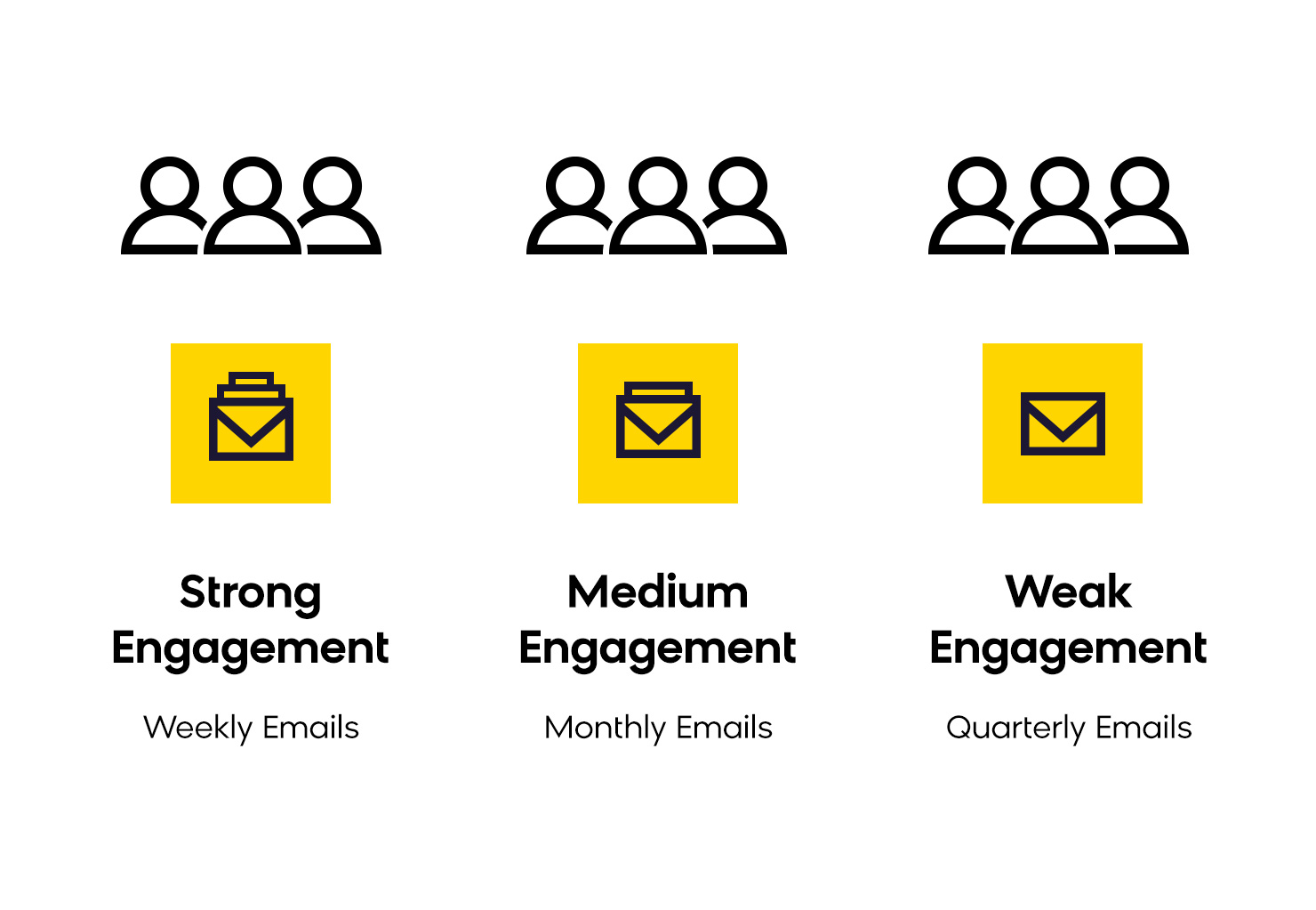
The Benefits of Collecting Customer Data
Collecting customer data offers a wealth of knowledge that can provide crucial insights for any company. This practice empowers businesses to make informed decisions, enhancing their ability to meet customer needs and expectations effectively.
One significant benefit of customer data collection is the ability to personalize marketing efforts. Understanding individual customer preferences allows for the creation of personalized marketing campaigns. By doing this, businesses can engage with customers on a more personal level, increasing customer satisfaction and loyalty.
Moreover, customer data can highlight trends and patterns in purchasing behavior. These insights can guide product development, ensuring offerings align with customer needs and desires. In turn, this can lead to increased sales and improved profit margins.
Customer data can also help identify potential issues before they become problems. By monitoring customer feedback and behavior, businesses can proactively address concerns, improving the overall customer experience.
Customer data also helps to provide ecommerce companies with a competitive edge. Understanding customers better than competitors do can position a company as a leader in its industry. This insight can help businesses stay ahead of market trends and adapt to changes quickly.
Using Customer Data for Personalization
Time and time again, customers are plagued with all sorts of poor customer experiences. If you’re lucky, they’ll forgive the fact that the situation ever happened, blaming it on a fluke the first time around. Though quite often, with the short attention span we see today, customer’s just take the easy way out, severing ties with the brand completely.
If you’re lacking accessible data for quick decision-making, you’ll soon be facing similar problems without a solution at hand: A dangerous situation now that the market’s shifting away from acquisition-dependency and towards loyalty.
In the early bookstore days of Amazon, there was a feature called Bookmatch. It required customers to rate a few dozen books and then generated recommendations based off their tastes. The system was slow and crashed frequently, and Amazon found that customers were reluctant to go through the extra effort of evaluating books.
So Amazon’s CEO, Jeff Bezos, suggested that the personalization team develop a much simpler system, one that made recommendations based on books that customers had already purchased.
Engineer Eric Benson, took about two weeks to construct a preliminary version called “similarities” that grouped together customers who had similar purchasing histories and then found books that appealed to the people in each group. It immediately yielded a noticeable uptick in sales and allowed Amazon to point customers toward books that they might not otherwise have found.
This feature was a small, yet noticeable start to providing mass personalization with the creative use of customer data. Though we’ve come a long way since “people who bought this also bought that.” We’re now able to engage in loyalty strategies on a very different scale.
Where customers exclusively pursue brands that provide:
- Quality products/service
- Value for their money
- Convenient buying processes
- A consistent overall experience
Companies can individually collect, assess, craft and deliver a custom-tailored customer experience in a consistent, convenient, and engaging manner, on a mass, automated scale. This can only be achieved with the correct use of flexible, unified data aimed towards a long-term customer loyalty strategy.
Remember: retention is not loyalty. While getting customers to return with a discount might seem like loyalty, it’s really just a short-term retention strategy. Loyalty is long-term. It’s the fuzzy feeling when coming back to buy from a brand regardless of price differentiation.
Most importantly, there are various possibilities offered by unified data:
- Gathering data from multiple sources into one platform
- Merging online and offline activities
- Uncovering the total addressable market (building refined campaign audiences)
- Developing a 360-degree view of each and every customer
- Improving targeting for marketing campaigns
- Predict the optimum next move with a customer
- Orchestrate omni-channel campaigns
Let’s take a look at what we can do with existing data to improve our long-term strategy with loyalty.
Times Are Changing: Customer Loyalty ≠ Customer Acquisition
Companies with advanced data strategies are not only surpassing others, they’re exponentially better at achieving their go-to-market goals. Now more than ever, it’s time to pay attention, because if you snooze you lose.
In the 90’s and early 2000’s, ecommerce was growing so fast that loyalty didn’t even need consideration; the acquisition of new customers was more than enough to sustain business. As growth comes to a crawl in 2019, more and more companies begin to understand what makes loyalty so important.
And in 2025, when acquisition growth is projected to drop as low as 3%, investing in customer loyalty will be even more of a necessity. Growth through acquisition is no longer a sustainable business plan – it’s time to accept the coming change in growth strategies, and adopt an approach that keeps you in business.
How to Use Customer Data: The 4 D's of Personalization
Chances are you’re already employing software to assist with your business needs.
Be it some sort of customer relationship management (CRM) system, master-data management (MDM) system or data management platform (DMP). These solutions create simplistic segmentation and marketing campaigns that lack automated decision-making, adaptive modeling and lagging tools to scale personalized customer journeys.
Employing just any available tool is not enough, you’ll need the right that will consider brand needs. That’s where a customer data platform (CDP) comes in.
CDPs are focused solutions for retail brands (B2C), where you don’t have a team going through records, but instead, you have a system that collects data into a single customer view at scale. Where it can make calculated decisions and be able you to react to that data set over time.
In order to successfully incorporate a CDP, it requires the careful orchestration of the four D’s— customer data collection, decision-making, designing engagements, and the delivery of experiences—only then can you provide true personalization at scale.
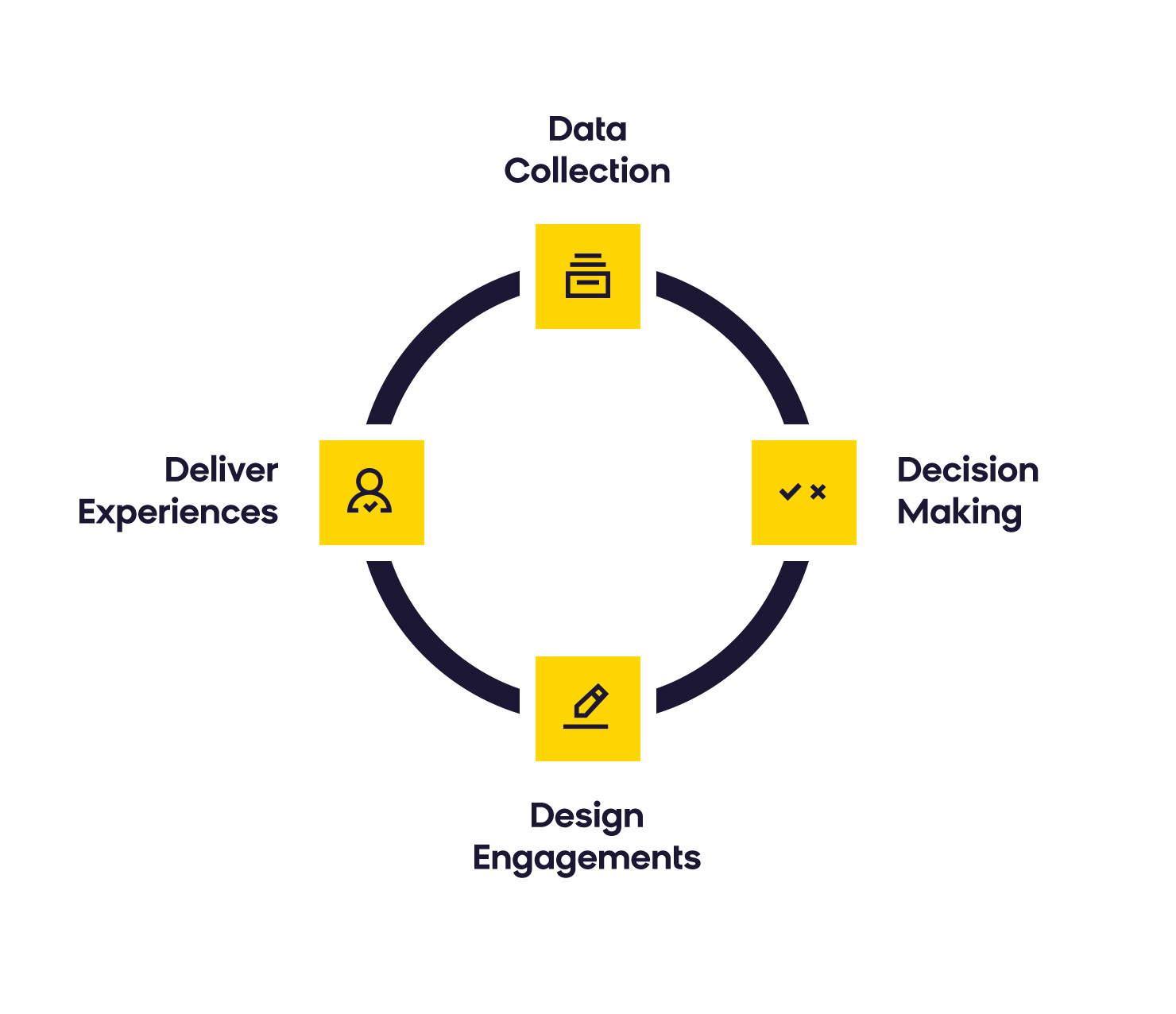
(1.) Data: Continue to Correctly Collect Customer Data
Let’s face it: Some departments are better at collecting data than others.
Maybe it’s your top-notch call center, answering questions in two-minutes or less.
It might just be marketing and their excellent market segmentation.
Or your sales team recording consumer data, organizing campaigns and following each touchpoint along the customer journey.
This haphazard collection process is not doing anyone any good. As our data becomes fragmented across several departments across the company, making it difficult, or downright impossible, to get a full view of your customers.
To add considerable fuel to the fire, siloed data may also occur when organizing around a channel or device. Do you think that sole marketing employee running Instagram is taking web banners into consideration when planning their promos? By keeping things mismanaged, you’ve got yourself a communication crisis waiting to happen.
Why is this poor execution?
First off, you’re wasting valuable resources storing multiple versions of the same data. It’s much more efficient to have it all centrally-located and accessible between departments. Who knows, you might even save on storage costs, finding budget to spend elsewhere.
On the other hand, we’re looking at severely inhibited productivity, where one team might hold the answers to another department’s questions. In addition, not all data is created equal. The contents of those data silos may differ slightly, and when deciding which are most accurate or up to date, you run the risk of working with outdated data —or overwriting the right one.
It’s really not your fault though, databases have siloed as they’ve historically grown up. Though you’re in luck. With the introduction of Customer Data Platforms (CDPs), data began revolving around the customer profile, instead of the device or channel, creating company-wide access to improve customer experience.
That’s the beauty of the CDP. Just like a recipe, it takes into consideration the data the company already has, merges it with real-time, relevant customer data collection streams and provides cross-department accessibility.
With a few straightforward changes, such as the introduction to a brand loyalty card, even offline purchasing activities can be tracked and combined with each individual customer profile. A simple gesture that includes valuable customer information that would be otherwise be lost or left behind.
Quick check:
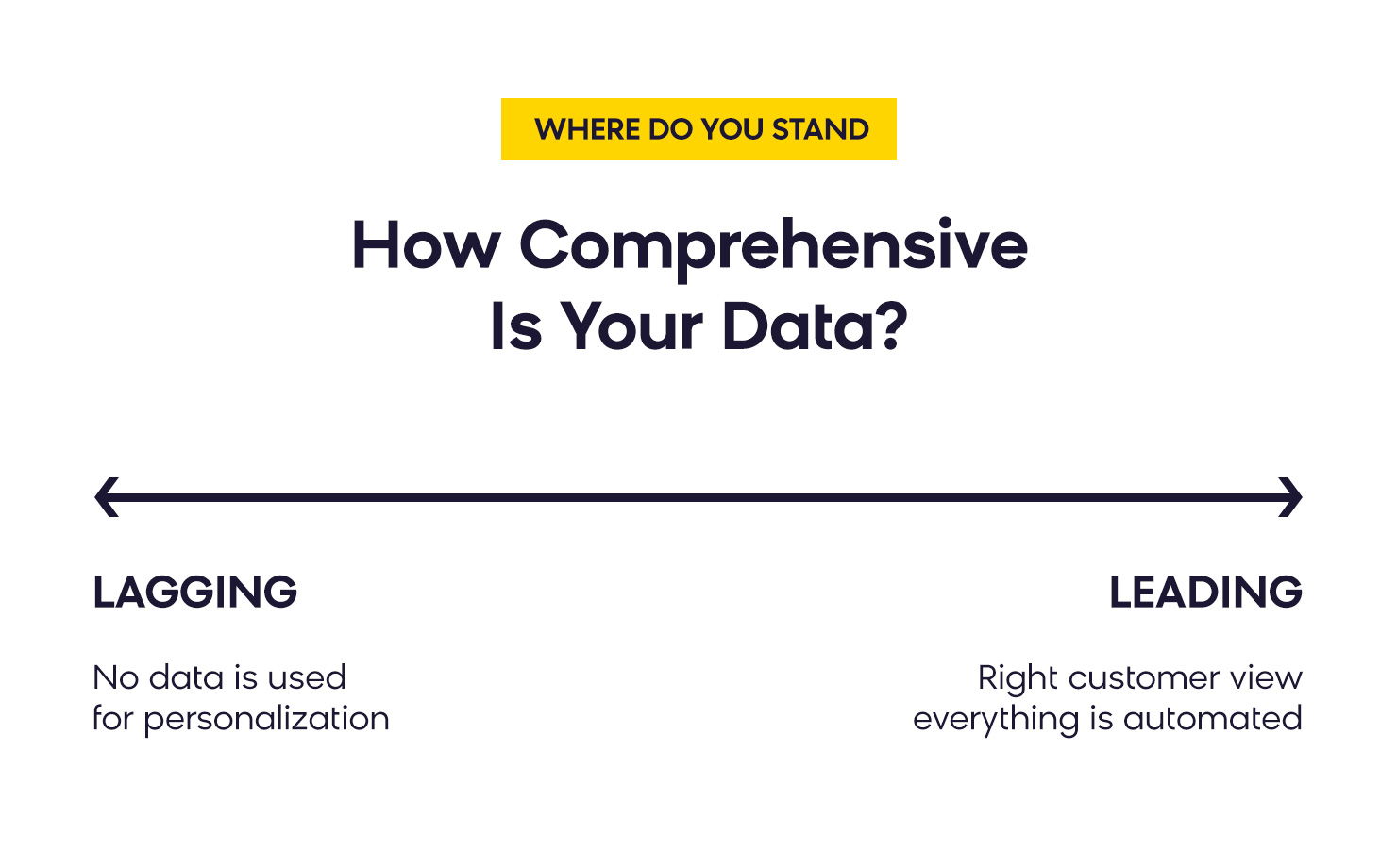
(2.) Decision: Mine Data to Find Patterns
Once your customer data collection is up and running, it’s time to consider processes to evaluate their potential value, also known as their customer score. Quite often this decisioning process is siloed as well, residing in an individual within the company, channel-specific or locked away in an ad-hoc program—or it doesn’t exist at all—shudder.
A truly progressive decision modeling is integrated with customer data, using machine learning and AI models to score various behavior in real-time. Here’s how it’s done:
- Discover success-enabling signals.
- Determine rules and regulations to score your customers.
- Match messages, offers and experiences to customer valuations.
- Prioritize when messages get sent and what channels are used.
These signals can range from the quite obvious (recurring purchases, measurable campaign reactions, social media participation) to the down-right hard to find (spotting intent, cart abandonments, or relationships between signals).
Becoming more receptive to identifying, incorporating and analyzing signals within your customer data collection will help outperform the competition in loyalty. Consider a few of the above-mentioned “pissed-off customer” scenarios:
Problem: Email campaign displays stock not available in the customer’s size.
Solution: Understanding the consumer, their requirements and relevant signals (such as “browsed but didn’t buy”) can produce tailored campaigns once desired stock is replenished.
Or alternatively:
Problem: Asking the customer for the same information repeatedly.
Solution: With a finely tuned connection between real-time access to existing data and the knowledge of what’s missing in order to improve the customer score, you can capitalize on certain touchpoints by creating incentives to volunteer data that builds on their existing profile. Thus, each new website visit can yield a better understanding of your target market.
With a complete understanding of customer scores, you’re one step ahead in reading customer behavior, auto-segmenting target markets and unlocking the ability to attract like-minded consumers.
Since relevant, personalized engagements are more alluring than inconsistent customer experiences or conflicting offers, it’s only natural that consumers will gravitate towards your business. Add machine learning and more complex artificial intelligence to scale your outreach across numerous marketing initiatives.
Quick check:
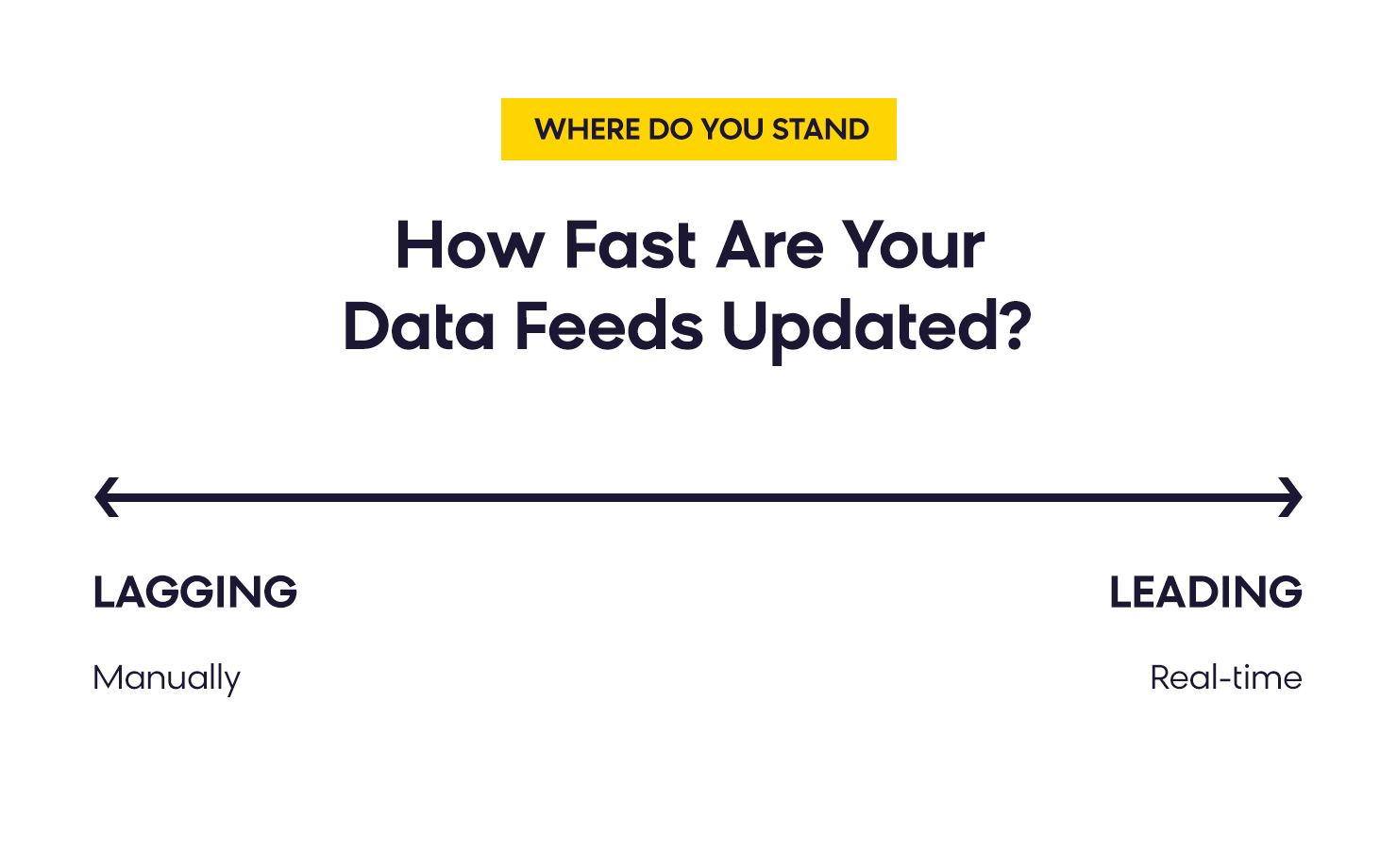
(3.) Design: Craft the Right Message
With great understanding comes the responsibility of even better action. Now that you’re well underway to becoming an well-informed brand, it’s time to design content that speaks to your loyal consumers.
You might want to consider a CDP with marketing automation capabilities, enabling the use of full-scale customer data contained within the CDP to deliver consistent and relevant communication across all channels (web, email, retargeting, text messages, mobile/browser push notifications, webhooks).
So what mechanics drive loyalty?
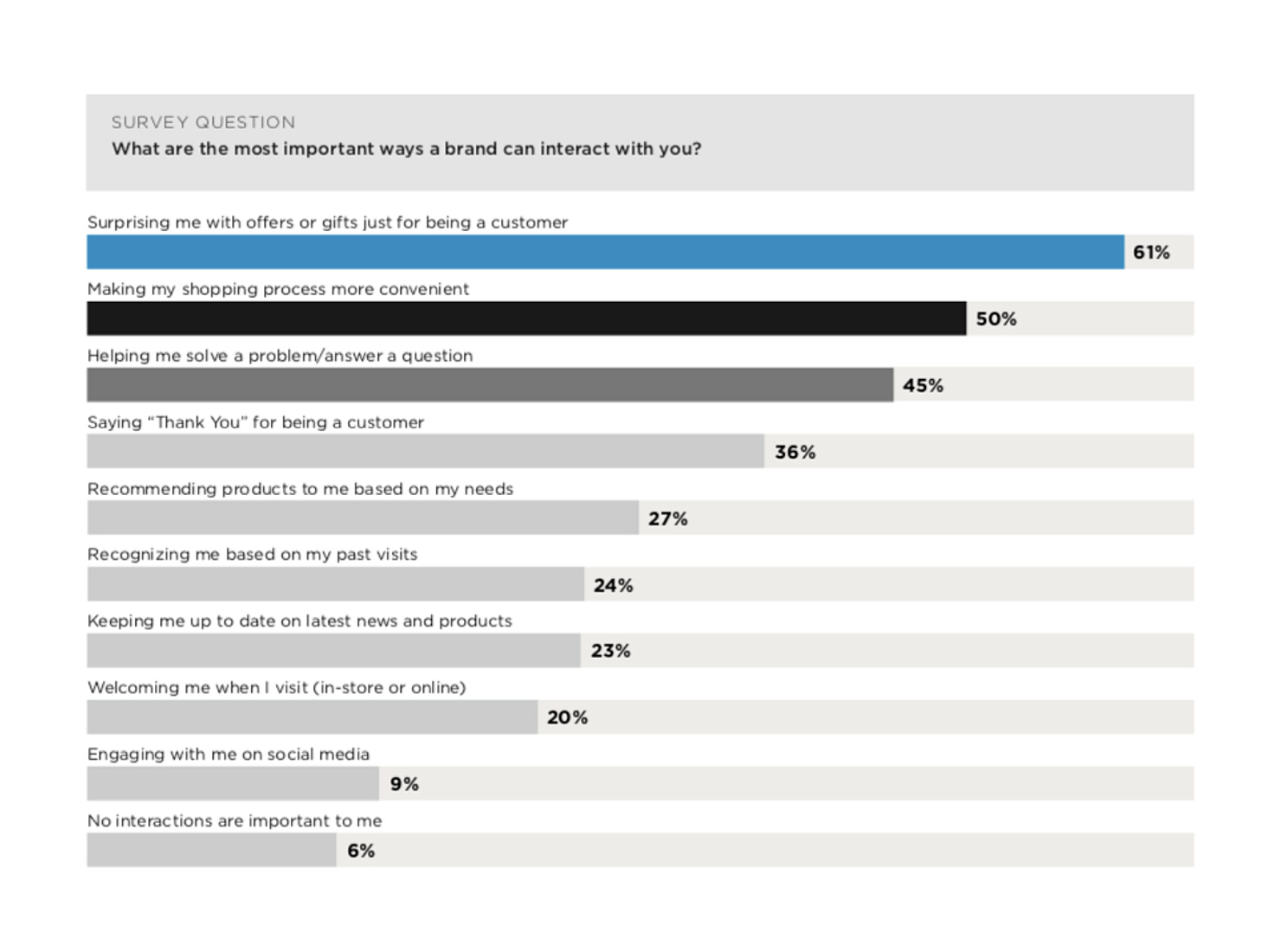
Believe it or not, a surprise offer or gift for being a customer (61%) goes a long way, ranking number one among customer experience. It really does works too.
If you haven’t shopped razors at Henry’s yet, for instance, you’re in for a real treat. A typical razor blade purchase comes jam-packed full of alternative shaving products. From shaving balm, wet wipes to aftershave, this seemingly inconspicuous product promotion is tailored to satisfaction, with a side-product of discovery. Who knows, the additional products might wind up in the shopping cart in the next round of purchases.
Zappos, on the other hand, rewards first-time sneaker buyers with a surprise free-shipping. “This one is on us,” breaks the conventional “do/get” consumer expectation, providing the opportunity to build a stronger relationship on an individual level and improve the likelihood for a second purchase.
Understanding the customer’s value over a period of time, or Customer Lifetime Value (CLV), unlocks… makes better sense to invest in retention rather then spending on customer acquisition.
A more convenient shopping process (50%), tops the customer experience chart as well. Between work and sleep, consumers spend their precious time watching movies on Netflix, scrolling their Instagram feed, and reading books on their Kindle. Companies are essentially fighting for whatever limited consumer attention is left. Thus, consumers reward brands that not only improve their day-to-day function, but alleviate blockers in their shopping experience.
Simply by including features that clarify their search for new products, discover possibilities and purchase will directly impact retention and long-term loyalty.
Quick check:
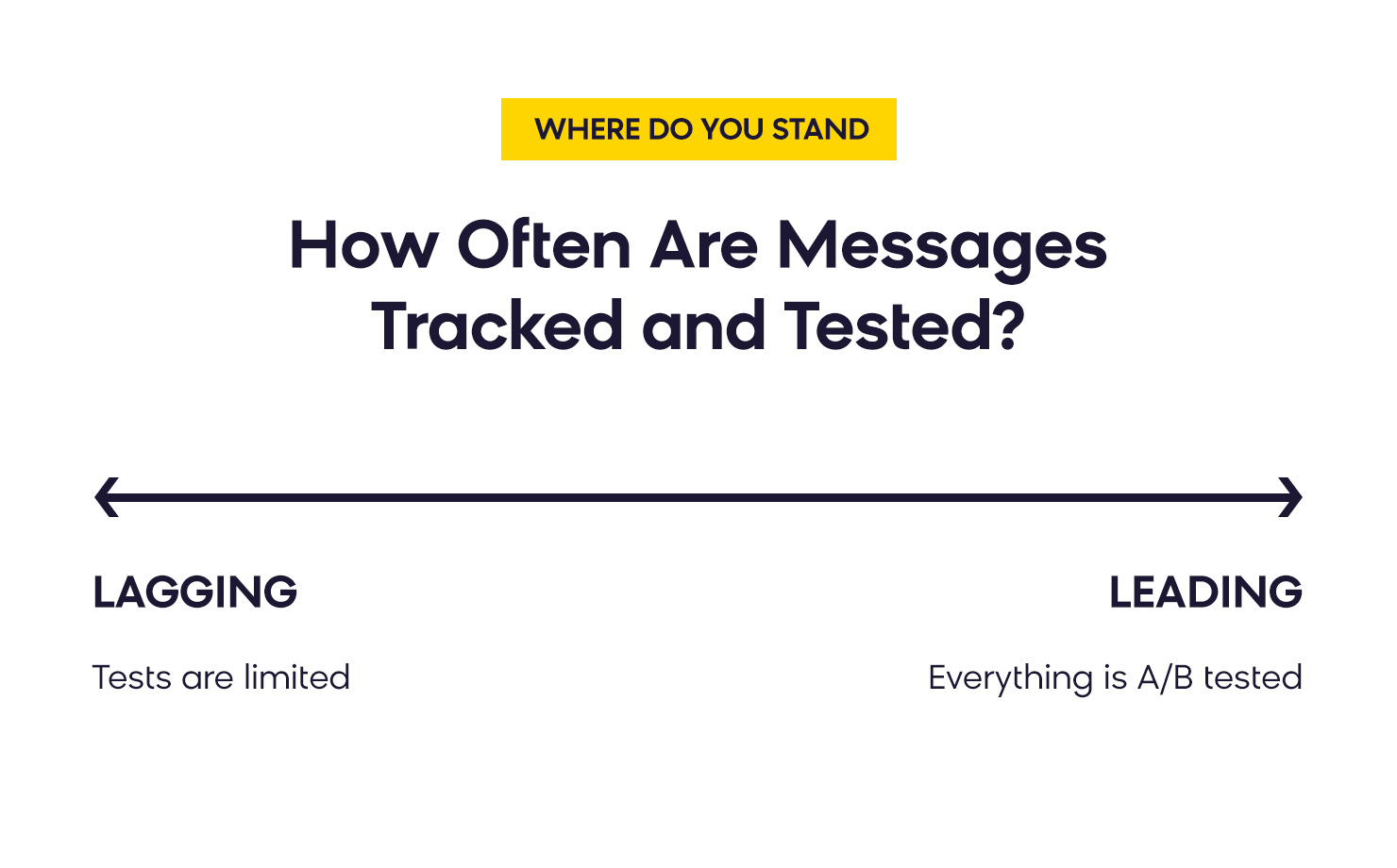
(4.) Distribution: Deliver Exceptional Experiences
The last piece of the puzzle involves delivering what customer data has been collected, analyzed and designed to provide exceptional consumer experience.
While employing a distribution system, such as a Publisher Ad Server, Demand Side Platform (DSP), or any other content distribution software, you enable the ability to deliver ad content to the end user. It’s often regarded as a grueling, manual process that blasts communications to a wide segment of customers with very little tailoring.
However, by connecting to a CDP, with its predetermined triggers and tagged content, these distribution systems go from blunt marketing instruments to a far more directed method of sending specific messages to distinct customer subsegments across all addressable channels.
How is this done?
Sophisticated businesses have developed a library of APIs to help tie the CDP into a “martech stack” (marketing technologies that deliver and track experiences). Integrating the stack this way creates a feedback loop that sends customer response, engagement and conversion data back to the CDP.
The CDP can then facilitate omnichannel orchestration (learn more about omnichannel here), where data tracked in real-time ensure constant and consistent communication. In other words, the same “20% discount” offer communicated via email can be seen in a banner on the web with a push notification sent through text message.
Since these campaigns are done using segmented target groups, each omni-channel experience can be as unique as the customer themselves. In other words, customer journeys that are personalized for the individual customer, creating individual loyalty programs.
While fully customizable email templates are nothing new, the ability to automatically personalize subject lines for each customer, with the inclusion of the “20% discount” sales event, can drastically improve email open rates by up to 50%.
Don’t stop there, continue improving the customer experience with custom recommendations, retargeted ads on social media and more, all which can be done through A/B testing content to see which serves best.
Finally, back to offline aspects, making sure you’re offering the same consistently, minimizing mistakes in communication.
Final Thoughts
The real winners in modern marketing are the brands that provide killer customer experience while simultaneously driving value for their business. Marketers that understand customer intent and effectively implement the four D’s: customer data collection, decision-making, designing engagements, and the delivery of experiences will gain an edge in the marketplace. It’s wholly achievable with right tool that unlocks personalization at scale.
Let’s improve loyalty together.
Go from passively using data to fostering a successful customer loyalty program — it’s time to consider software that will backup even your best business ideas. The Bloomreach Commerce Experience Cloud is the ideal solution for e‑commerce customer communication for ecommerce personalization.
Bloomreach's customer data engine comes with built-in data ingestion and unification to give you a single marketing view of the customer. This sets your data up the right way to drive maximum value from your omnichannel orchestration and personalization efforts. Learn more about why the best customer data platforms are letting down marketers and using a customer data engine to power ecommerce personalization is the future.
-->
Found this useful? Subscribe to our newsletter or share it.



